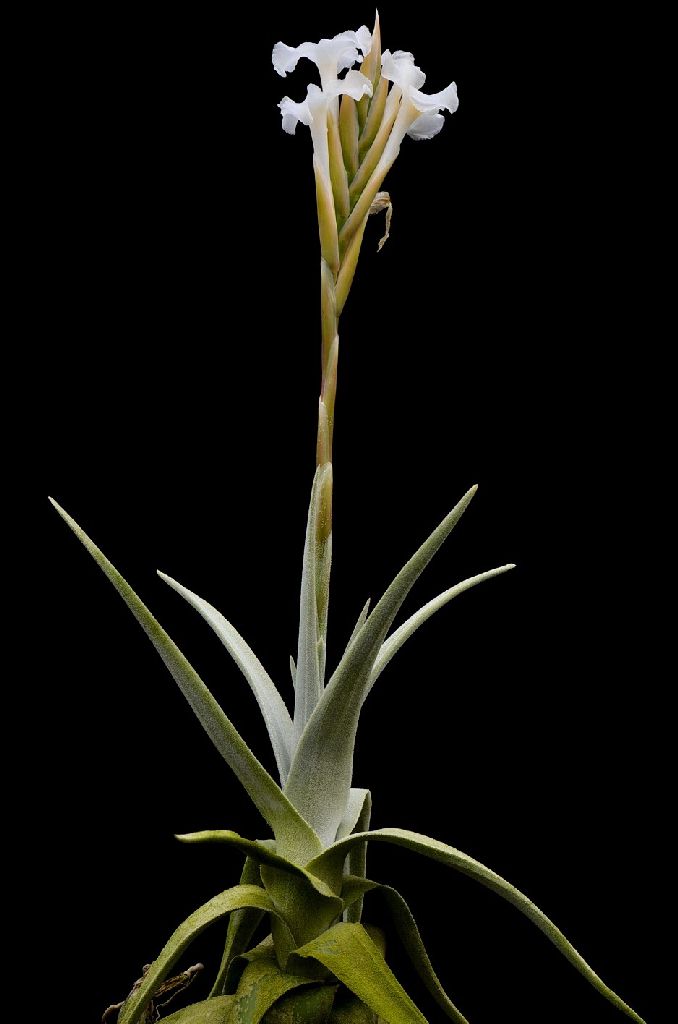
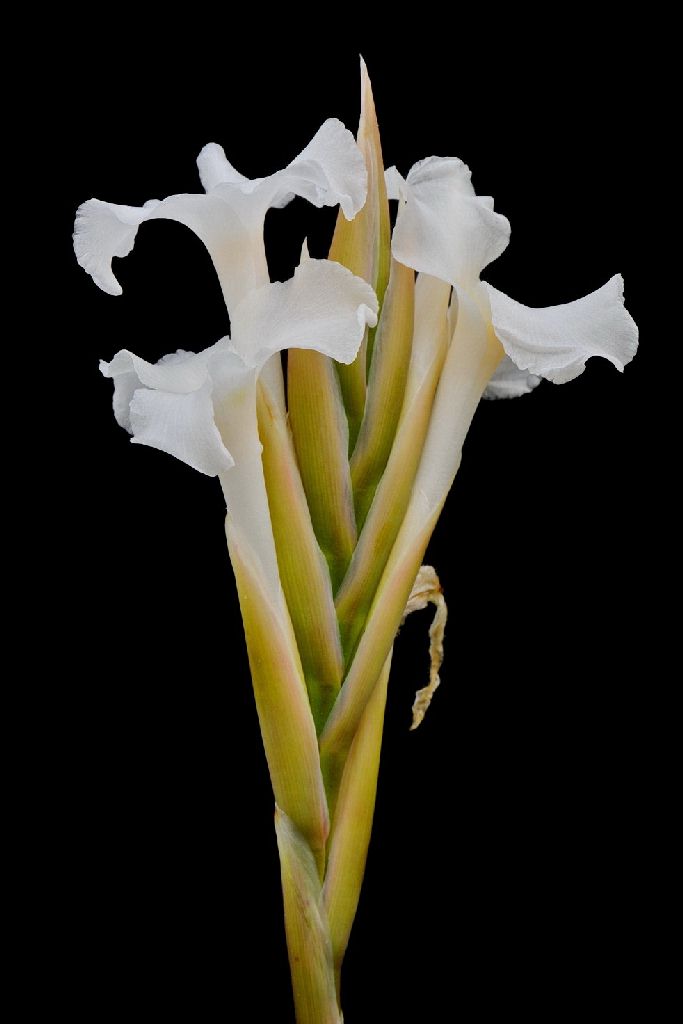
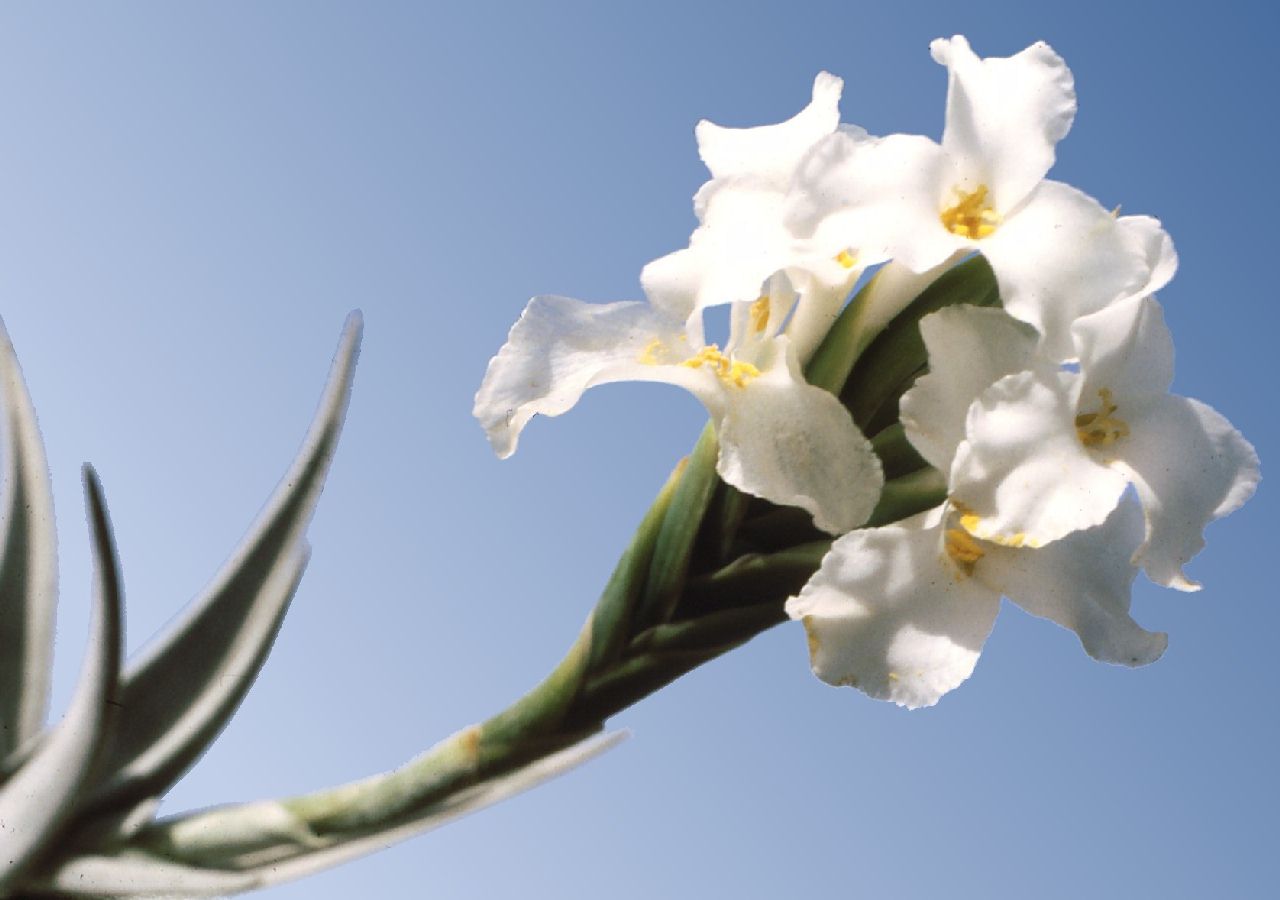
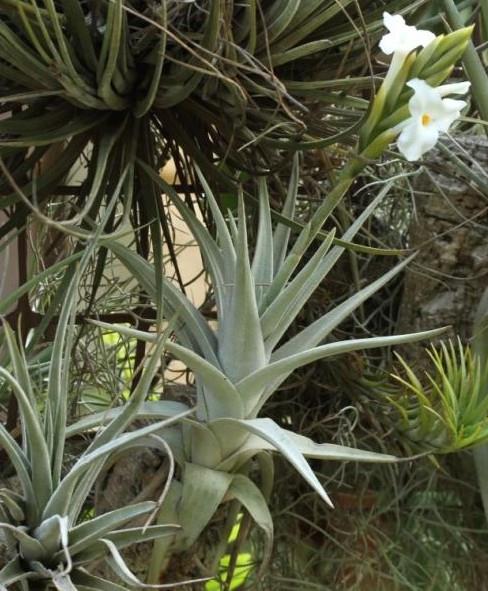
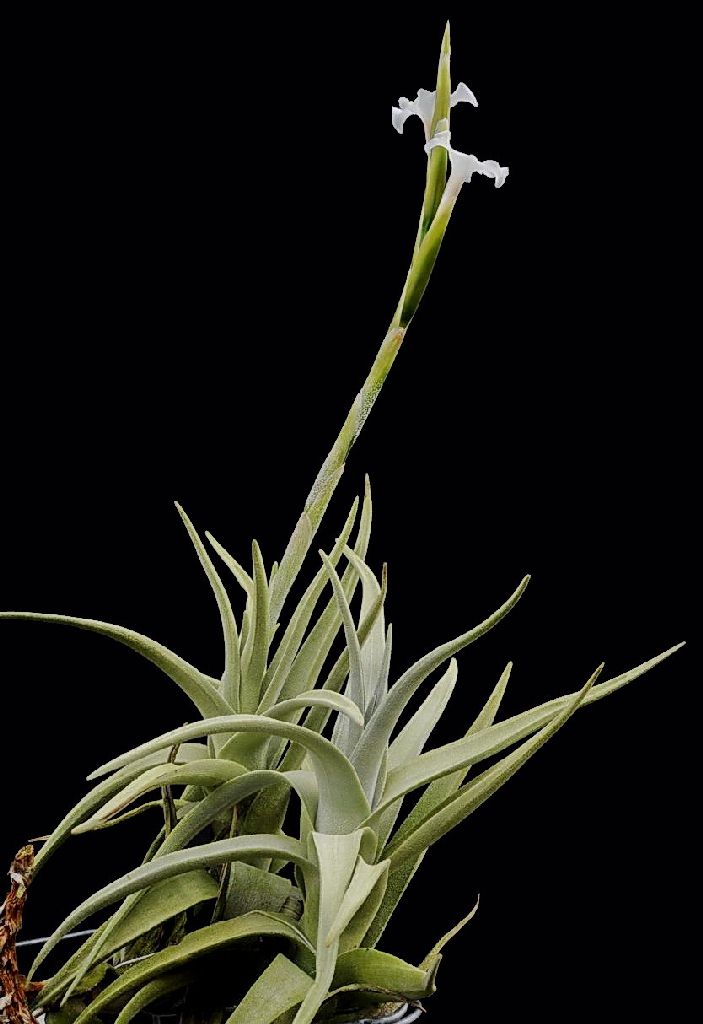
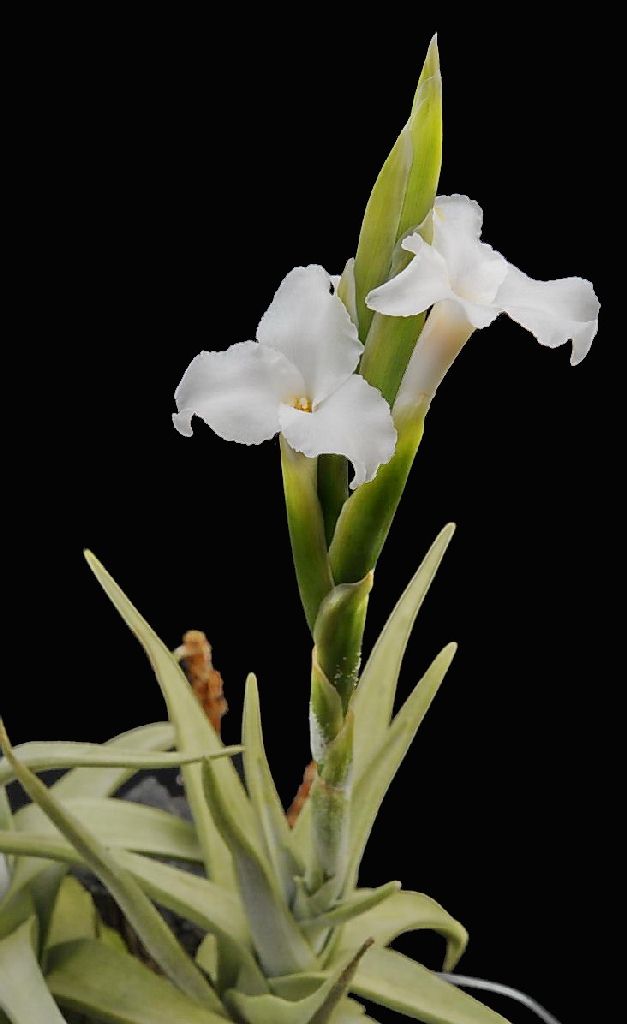
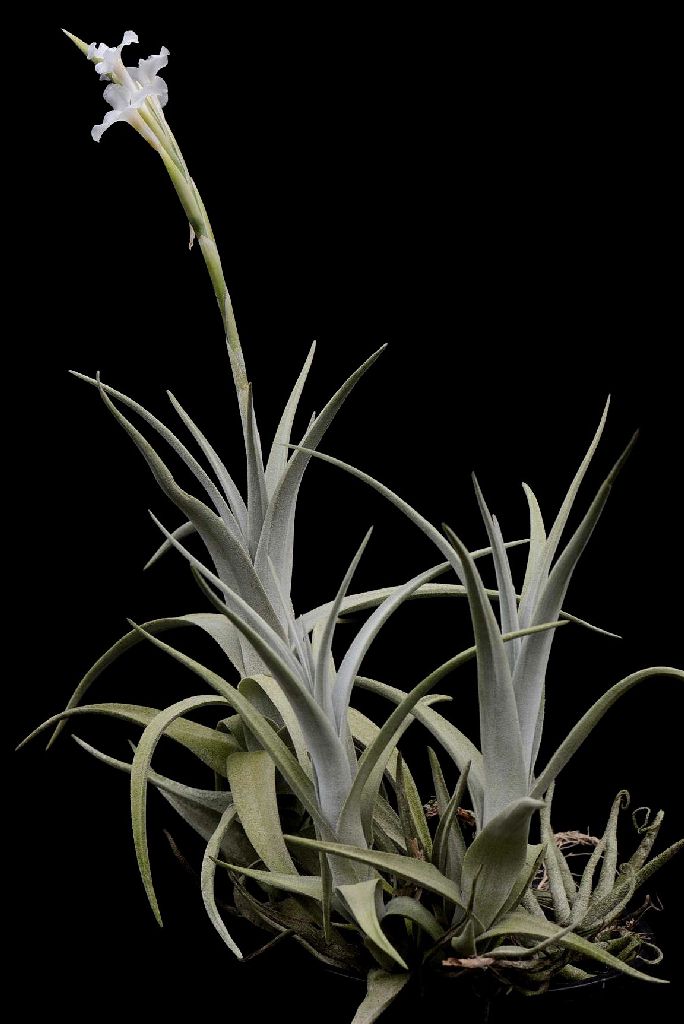
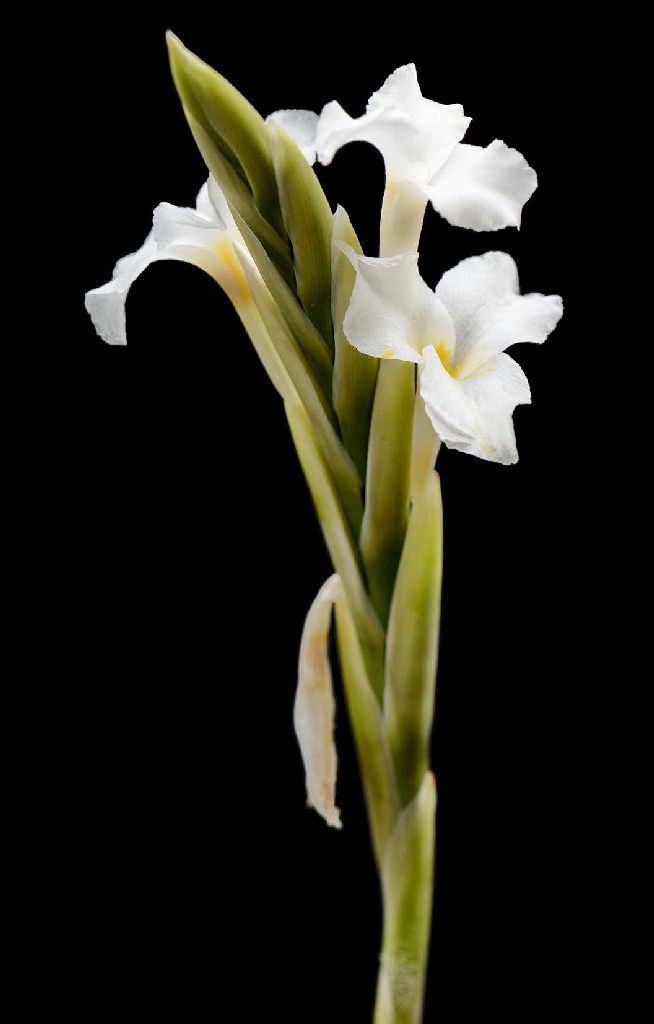
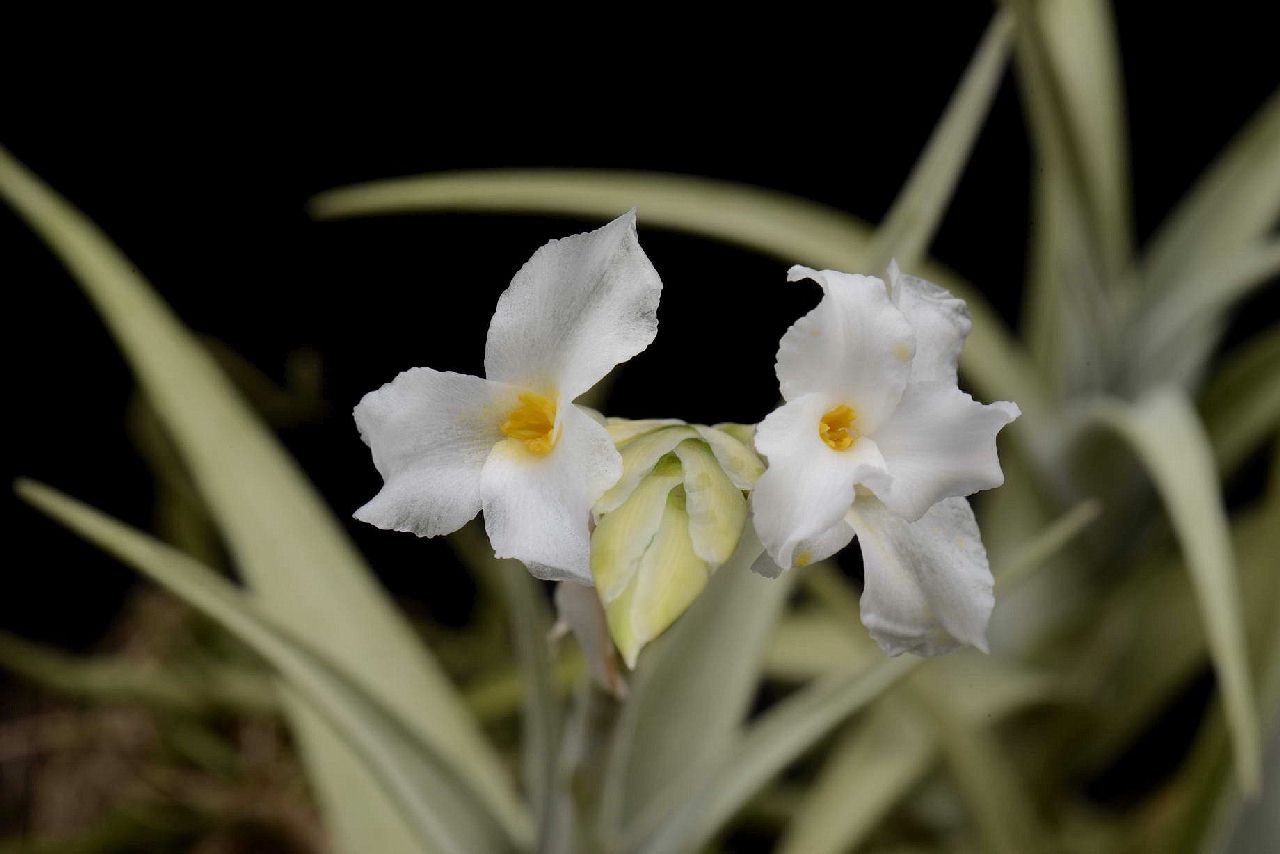
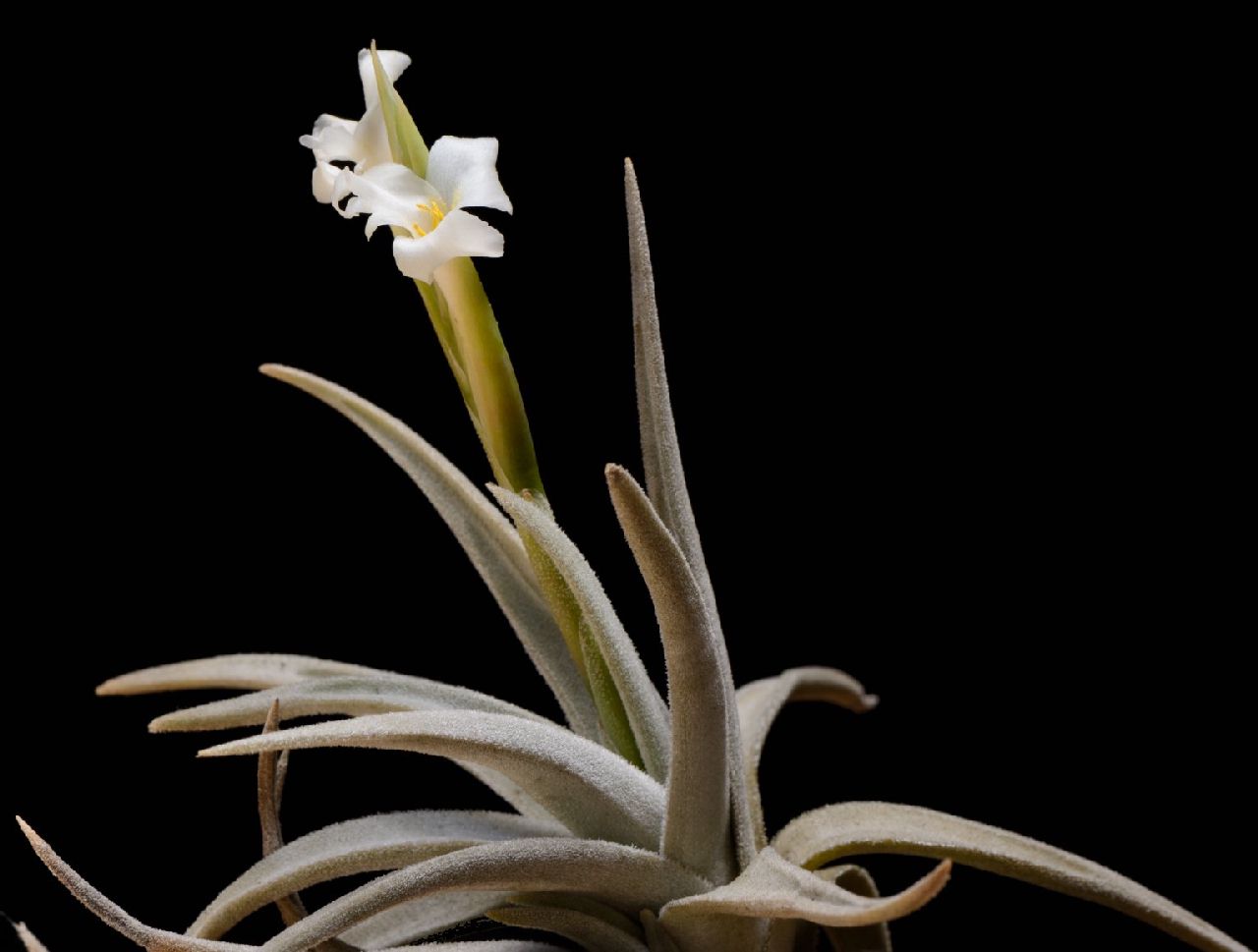
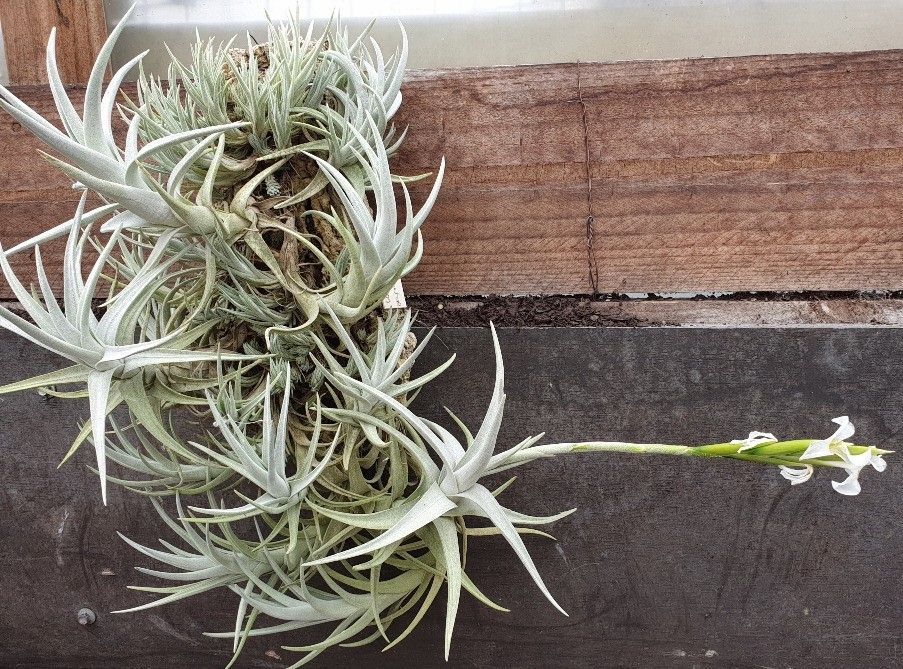
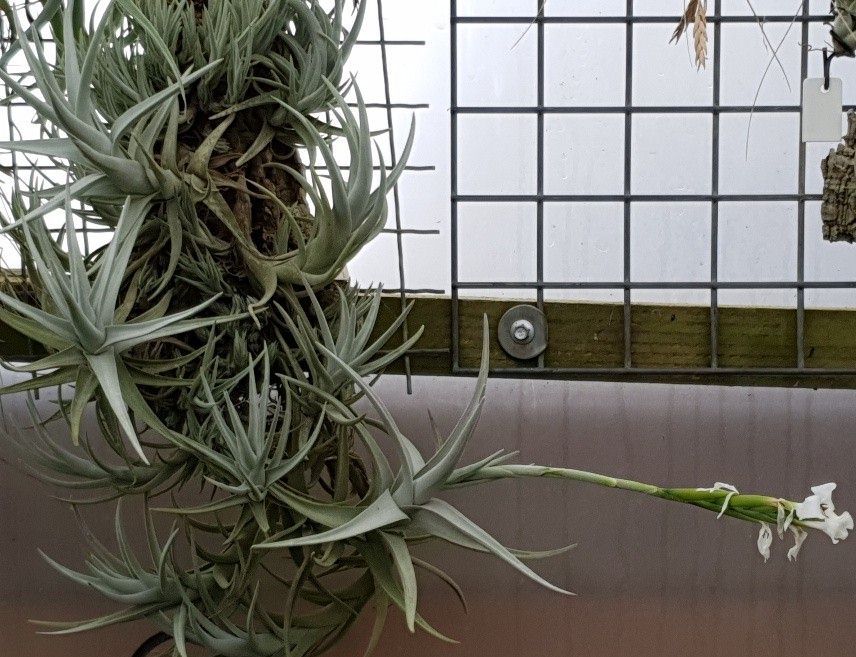
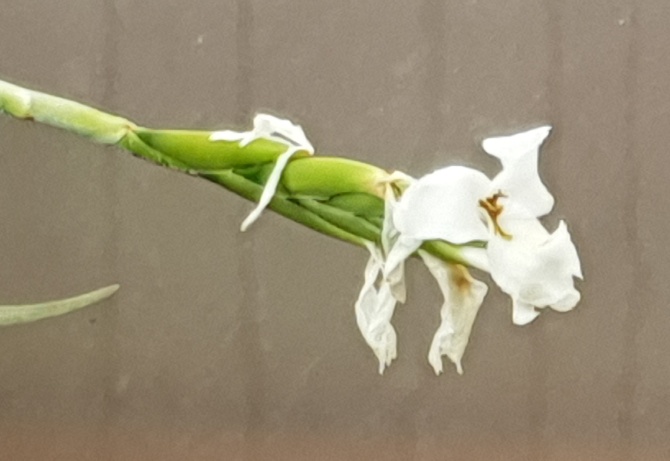
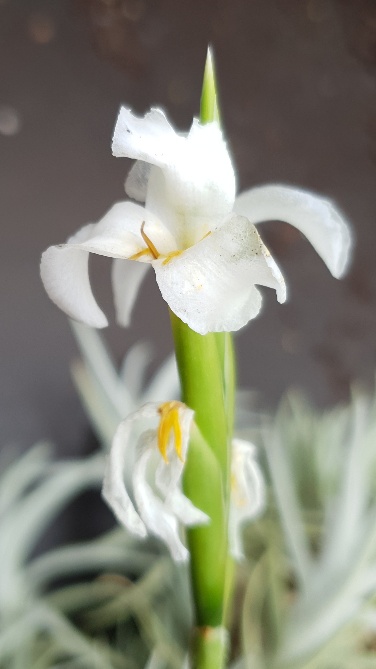
Tillandsia arequitae (Andre) Andre ex Mez, DC. Monogr. Phan. 9: 814. 1896.
Tillandsia xiphioides var arequitae Andre, Revue Hort. 65: 156, pl. 1893.
Desc from S&D p813
Plant flowering to 4 dm high, often subpulvinate; roots present; stem conspicuous, usually branching several times, decumbent for most of its length, ends of the branches ascending.
Leaves many, erect to recurved, densely polystichous, not secund, to 20 cm long, but usually about 10 cm, covered with spreading cinereous scales;
Sheaths obscure, densely imbricate, making the stem appear very stout;
Blades narrowly triangular, at¬tenuate to the abruptly acute pungent apex, 15 mm wide, stout, rigid, carinate below, complicate toward apex.
Scape erect, conspicuous, ca 1 dm long, usually exceeding the leaves;
Scape-bracts densely imbricate, narrowly elliptic, acute, greenish stramineous, at least the lower ones lepidote.
InfIorescence lanceolate, acute, complanate, to 10 cm long, densely 6-12-flowered; Rhachis flexuous, angled, narrowly alate, glabrous.
Floral bracts densely imbricate and concealing the rhachis, 3 times as long as the internodes, narrowly triangular-ovate, acute, 25-40 mm long, exceeding the sepals, rather thin, glabrous, slightly nerved, greenish with stramineous nerveless margins, ecarinate;
Flowers subsessile.
Sepals linear-lanceolate, obtuse, 21 mm long, submembranaceous, glabrous, equal, free;
Petals ca 5 cm long, white, odorless, the claw linear, blade spreading, suborbicular, ca 18 mm wide, obscurely crenate or entire;
Stamens elongate, barely included or exserted from the throat of the corolla, shorter than the pistil;
Anthers linear, 7 mm long;
Ovary prismatic.
Type. Andre K-320 (holotype K; isotypes F, GH, NY), Cerro de Arequita, Minas, Lavalleja, Uruguay, 1890.
DISTRIBUTION. Saxicolous and epiphytic, southeastern Uruguay.
URUGUAY. LAVALLEJA, Minas: Arequita, l5 Apr 1906, Osten 4684 (MVM); cult. Nov 1948, Legrand 3136 (MVM); without exact locality, Arechavaleta 2613 bis (B).